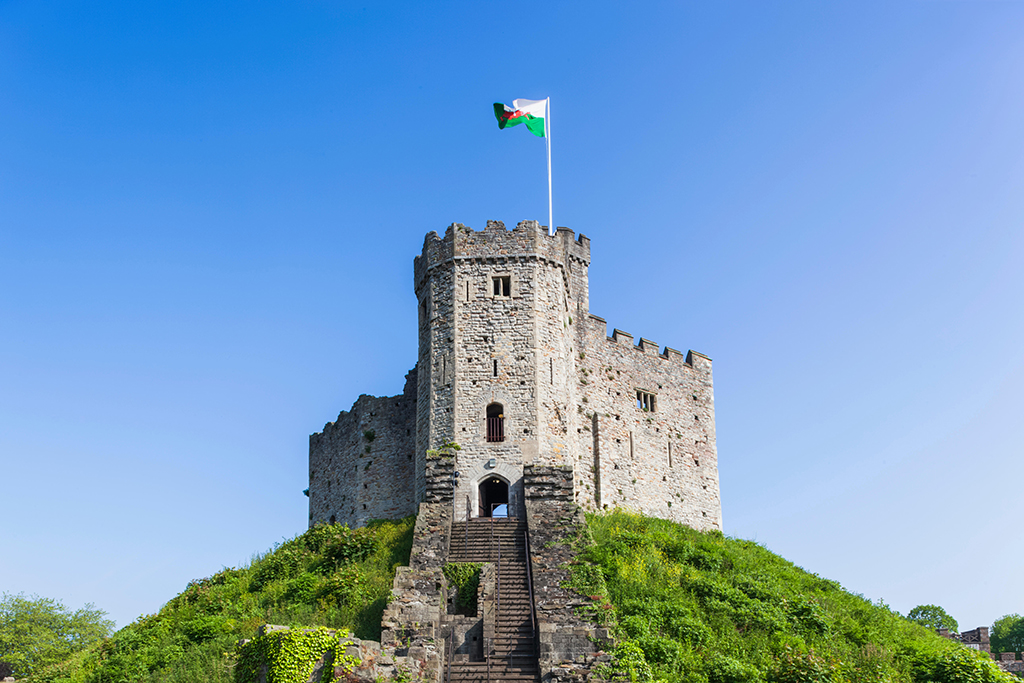The best stately homes across Celtic Britain
Nancy Alsop brings us a potted history of some of the finest stately homes across Celtic Britain, from Northern Ireland and Scotland, to Wales and the Isle of Man
The best stately homes across Celtic Britain
Cardiff Castle, Cardiff, Wales
The characteristically shrewd Romans noted this site’s easy access to the sea and, from the mid-1st century onward, Cardiff Castle was home to a succession of Roman forts. The Normans were next to move in, building the original motte and bailey castle, reputedly commissioned by William the Conqueror himself, with the new fortifications including the magnificent keep, which still stands today.
Over the ensuing centuries, it was owned by a succession of aristocratic families, including the medieval Lords of Glamorgan but, during the Wars of the Roses, its fortunes were chequered, falling into various hands before, in the 15th century, coming under the ownership of its most famous incumbent yet: Henry Tudor, the future King Henry VII, who brought the Wars of the Roses to an end, and with it, Cardiff Castle’s fluctuating fortunes.
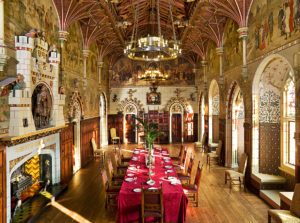
In the 19th century, the wealthy Bute family transformed the castle into the neo-Gothic home that still stands today. Visitors are invited to enjoy its many incarnations, from its Victorian fantasy apartments, richly decorated with gilding, wood carvings, marble, and stained glass to its Norman keep and reconstructions of the Roman walls, and even a re-enactment of its time as a WWII air raid shelter.
Hillsborough Castle County Down, Northern Ireland
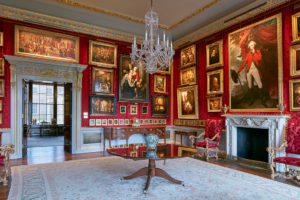
Technically a ‘big house’, Hillsborough has an outsized legacy. Now the official home of the Secretary of State for Northern Ireland, this stately home’s history can be traced back to Moyses Hill, who came to Ireland in the 1600s with the army hoping to secure his fortune. He snapped up 5,000 acres, incrementally adding more until the whole of Hillsborough belonged to the family.
Soon, the Hills were the area’s predominant landowners, and in the 18th century, Wills Hill became the first Marquess of Downshire, hosting members of high society, including Benjamin Franklin, and restoring the fort in the fashionable Gothic style.
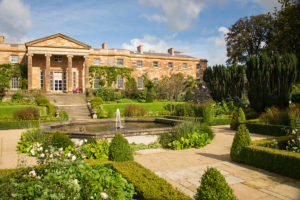
In 1925, Hillsborough was sold to the British Government for £24,000. After Partition in 1921, governors were appointed to represent the monarch in Northern Ireland, and Hillsborough became their official residence. In 1972, with the establishment of Direct Rule from London, the governors were replaced by the Secretary of State for Northern Ireland. Best known of these was Mo Mowlam, who played a vital role in establishing peace in Northern Ireland and many talks that led to the Good Friday Agreement, which celebrates its 25th anniversary this year, were held here.
Mowlam loved the place so much that some of her ashes are scattered in the gardens. She would be delighted to know that Historic Royal Palaces have transformed the elegant state rooms, as well as the gardens, which are open for all to explore.
Glamis Castle, Angus, Scotland
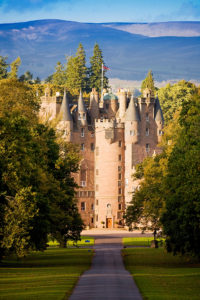
The ancestral stately home of Queen Elizabeth The Queen Mother, Glamis Castle was also the birthplace of Princess Margaret in 1930 – the first royal baby born in Scotland since Charles I. That accolade, however, is only the latest in its 650-year history, throughout which Glamis has been no stranger to royalty. Mary, Queen of Scots was once a visitor, while Shakespeare enthusiasts will know it as the place where Macbeth killed Duncan (although, as historians clarify, it was King Malcolm II who was murdered on the site in 1034, not Duncan – and the act was not committed by Macbeth).
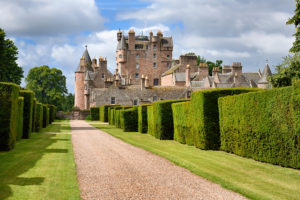
Its current incarnation can be traced back to 1376, when King Robert II granted the Glamis estate to John Lyon, Lord of Glamis, establishing the seat. Rebuilt and expanded upon over the centuries, the family’s lion symbolism abounds through its many rooms, and the turreted exterior resembles an ornate château. Purported to be one of the most haunted castles in Britain, visitors should look out for the spectres of Janet Douglas, Lady Glamis; a young serving boy; and a duo of eternal dice players.
Milntown House, Ramsey, Isle of Man
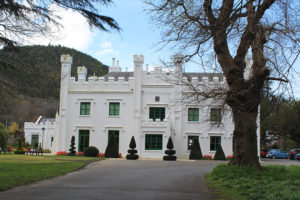
The first thing that greets visitors upon arrival at Milntown is its gleaming white Gothic façade set amid 15 acres of gardens and woodland. This striking aspect was an 1830s addition, courtesy of Deemster (or Judge) John Christian. The house had been in his family since the early 16th century but in the 17th century, the family decamped to Cumberland, renting out the property until John Christian’s return to the ancestral home.
After the death of William Bell Christian in 1886, Milntown’s fortunes were uncertain. His widow ran it as a private school. Later it became a hotel. What visitors see today is an amalgam of the Christians’ legacy and that of the decorative efforts of Lady Kathleen Edwards, who moved in with her son Sir Clive Edwards and his lifetime friend Bob Thomas in 1963. Upon his death in 1999,
Sir Clive bequeathed his estate to the Milntown Trust – and it is as much a draw for those interested in history and architecture as it is for motoring enthusiasts. His lifelong passion and interest in motor sports is evidenced in the vast collection of vintage vehicles on display.
Inveraray Castle, Argyll, Scotland
Inveraray Castle has towered, fairytale-like, over the shores of Loch Fyne since the 1400s, but the imposing turreted beauty that stands there today dates from the 1700s. That it is wildly beautiful stands to reason; it was conceived by the great architect John Vanbrugh, a visionary who was also responsible for two of England’s finest stately homes: Castle Howard and Blenheim Palace.
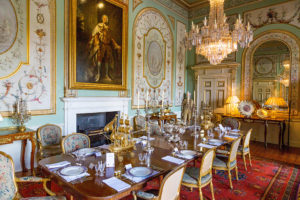
There is something especially poignant about the fact that Vanbrugh, who sketched the concept, did not live to see its execution; instead that job was left in the capable hands of Roger Morris and William Adam, while the latter’s sons, James and Robert Adam, oversaw its completion. The foundation stone of the Gothic Palladian icon was laid in 1746, but a fire in 1877 precipitated the addition of the third floor and corner towers.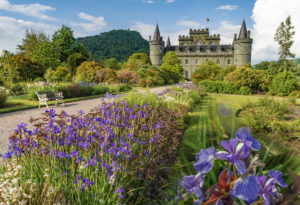
The seat of Clan Campbell, this stately home has been the home of the Dukes of Argyll since the Dukedom was created in the 1700s and found fame when it featured in Downton Abbey as Duneagle Castle.
This is an extract, read the full feature in our June/July 2023 issue of Discover Britain, available to buy here.
Read more:
The Garrison Chapel and the Prince’s Foundation: The King and us

